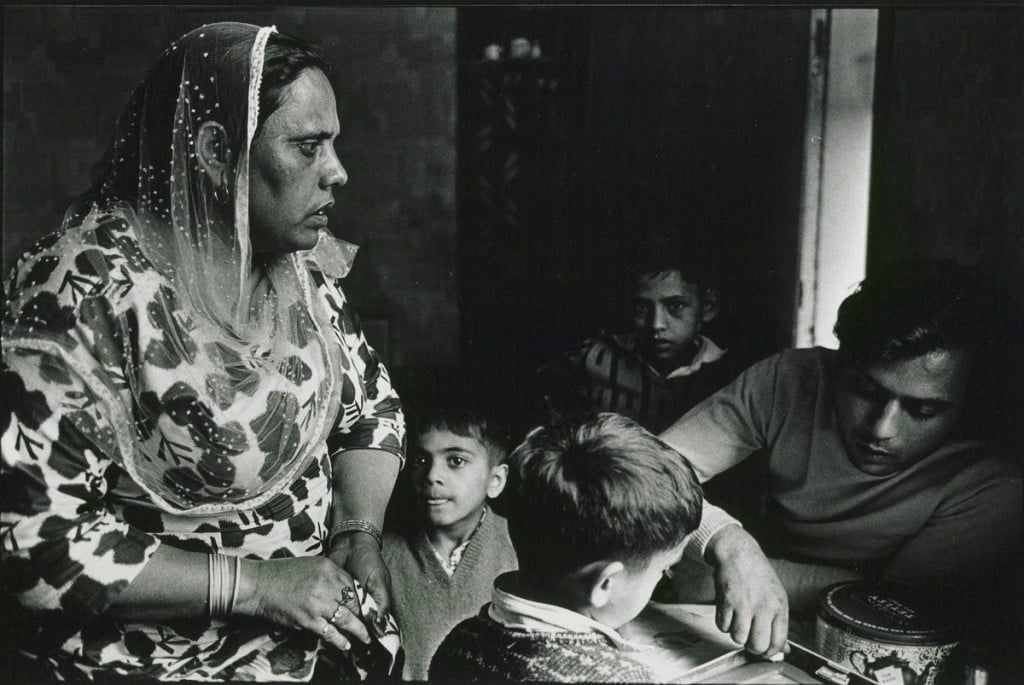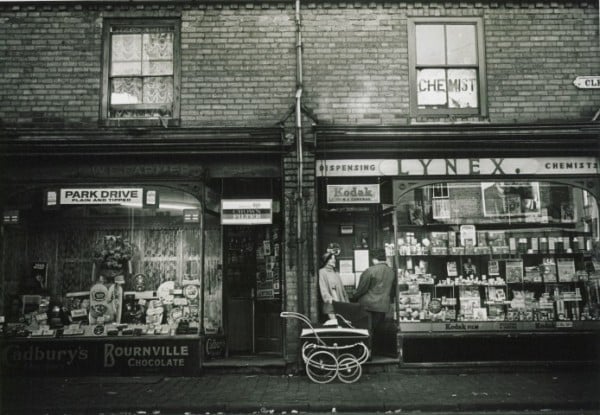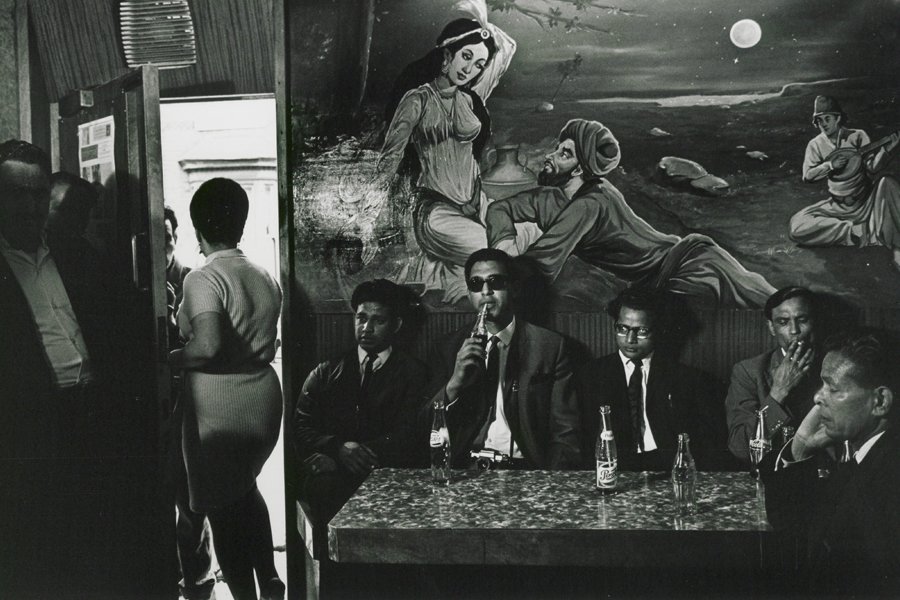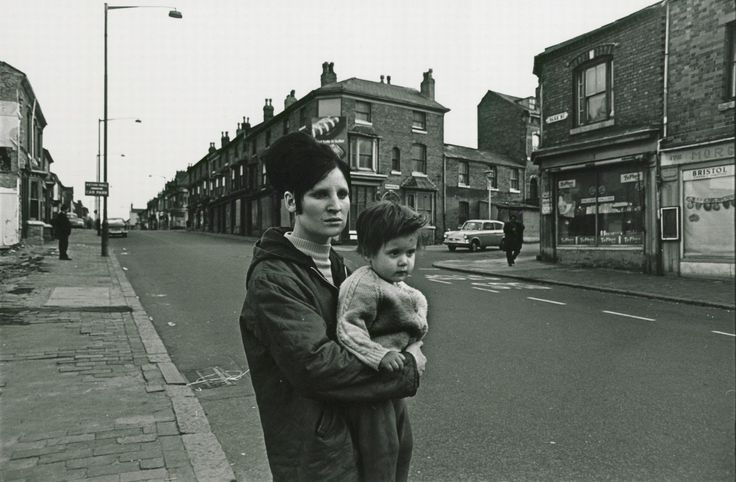Exhibition review: Janet Mendelsohn’s Varna Road @ the IKON Gallery
March 10, 2016

Snaking around the IKON Gallery’s second floor, Janet Mendelsohn’s photographs depict everyday life in Varna Road, Balsall Heath between 1967-69. In 2014, as the city marked the 50th anniversary of the founding of The Centre for Contemporary Cultural Studies (CCCS) at the University of Birmingham (UoB), Mendelsohn donated an archive of photographs and research made during her postgraduate study at CCCS. This archive has formed the basis for work by the city’s cultural institutions to collect and archive further memories of Balsall Heath, and for Ikon to display Mendelsohn’s photographs in a fine art setting.
The politicised closure of CCCS’s successor department CSS in 2002 under the auspices of ‘restructuring’ following 2001’s Research Assessment Exercise (RAE), and the subsequent removal of Cultural Studies from the remit of UoB’s School of Social Sciences, marked the end of an era for Britain’s academic left. Despite the revenue generated by Cultural Studies at UoB as a site of internationally recognised innovation in sociological theory; the leftist department could not long survive neoliberalism’s incursions into the academy.
As fees continue to rise, budgets continue to shrink, and academic work becomes increasingly precarious for all but the upper echelon, the reconstitution of the RAE as the Research Excellence Framework has intensified top-down institutional scrutiny on the manner in which academic research is conducted and the ‘relevance’ of the questions such research considers. Arguably, support for a counter-hegemonic innovation in subject matter, methodology and social objectives such as that fostered by the academics of CCCS would not be politically viable in contemporary academic institutions.

Influenced by Stuart Hall’s focus on cultural conjuncture, the CCCS’s annual reports attest that Mendelsohn began her work at UoB with the intention of conducting a ‘photographic study of an immigrant sub-culture’. By the late 60’s Balsall Heath had become a relative safe-haven for new immigrants and other marginalised people. Varna Road, well known as part of Birmingham’s red-light district, drew the focus of a moral panic – labelled in the press as ‘the wickedest road in Britain’.
In keeping with its foregrounding issues of class, gender, race, and critical theory, the CCCS had a prolonged engagement with the material and semiotic conditions of ethnic marginalisation and of women’s work. Bringing with her the American tradition of using documentary photography to conduct ethnographic studies concerned with the lives of the working poor, Mendelsohn’s survey of Balsall Heath’s communities led her to document not only the sub-cultures formed by the meeting of new diasporas, but also the living conditions of women sex workers.
The sub-culture Mendelsohn set out to study is best represented here by the repeated presence of the Kashmir Coffee Bar, shown as a focal point for community life. In street scenes Bollywood murals hang proudly alongside cigarette adverts and portraits show people of differing heritage mingling happily. The exhibition is also grounded through Mendelsohn’s photographs of one sex worker in particular – ‘Kathleen’, her partner ‘Salim’, and their family, allowed the American photographer to record their daily lives. This repetition of subjects enables the exhibition to construct a sense of narrative and routine.

Academics at CCCS would likely have taken issue with the loaded wording of IKON’s exhibition guide for Varna Road, particularly where it states; ‘her images effectively convey an understandable tendency to yield to the temptation of prostitution’. The framing of sex work as an occupation into which women possessing a ‘vulnerability’ are ‘tempted’ carries with it a puritanical moral judgement which ought to be carefully excised from the presentation of any such ethnographic study. The positioning of the words ‘an understandable tendency’ has the effect of othering those who ‘yield’ to this ‘temptation’.
Elsewhere, the children being raised on Varna Road are positioned as inquisitive, impressionable subjects; they are inheritors of gesture and signification. The persistent presence of children becomes not only a reminder of social responsibility but also a lens through which the viewer can enter the photographs unreservedly, shedding their preconceptions to the best of their ability.

Ultimately, these photographs are a testament to the resilience and strength of the people they depict. The images humanise their subjects, providing an alternative narrative to the distancing moral judgement through which media coverage condemned Balsall Heath’s marginalised communities. Yet, the contemporary relevance of Mendelsohn’s project is stark, sex workers and immigrant populations today remain marginalised, othered, and underrepresented.
Presumably, the IKON’s 2016 Varna Road exhibition uses a similar selection of images as Mendelsohn’s 1970 exhibition at The Carpenter Center for the Visual Arts, or follows visually the same threads of narrative that had been present in her 1969 photo-essay of the same name, published in UoB’s Alta magazine.
Sadly neither that essay nor any fragments of its texts are present in the exhibition room itself, which is arranged as if the study were a purely photographic exercise, nor in the exhibition guide. However, some extracts from Mendelsohn’s interviews are available in the exhibition catalogue. Additionally, the full text is available for study at the Cadbury Research Library alongside the photographer’s negatives and archived research material.
Upcoming at the IKON: People’s Archive Weekend Stories of Balsall Heath, Saturday 12 and Sunday 13 March 12-4pm.

Comments